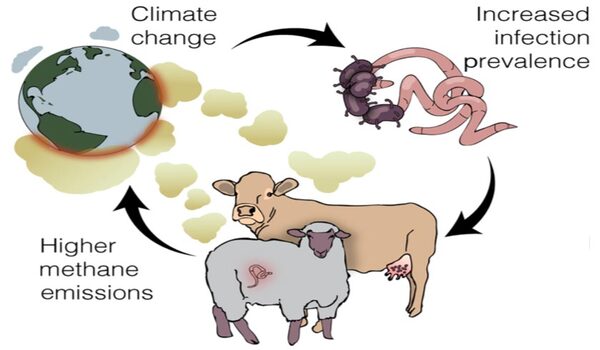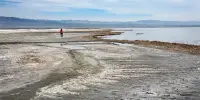Infectious disease professionals urge the medical community to be prepared to deal with the impact of climate change on the spread of diseases such as malaria, Valley fever, E. coli, and Lyme.
A group of infectious disease experts urged more medical professionals to be aware of and prepared to deal with the impact of climate change on disease dissemination. Their report, published today in JAMA, raises concerns regarding the genesis and spread of dangerous infections. The authors also urge the medical community to update their education and training and take action to combat global warming.
“Clinicians need to be ready to deal with changes in the infectious disease landscape,” stated lead author George R. Thompson. Thompson is a professor in the Departments of Internal Medicine, Infectious Diseases, and Medical Microbiology and Immunology at the University of California, Davis School of Medicine. “Learning about the connection between climate change and disease behavior can help guide diagnoses, treatment, and prevention of infectious diseases.”
Thompson advised physicians and practitioners to keep “a high index of suspicion of diseases on the move. I think with improvements in our understanding of the disease, there will be more testing and we’ll miss fewer cases that way,” he went on to say.
We’re seeing cases of tick-borne diseases in January and February. The tick season is starting earlier and with more active ticks in a wider range. This means that the number of tick bites is going up and with it, the tick-borne diseases.
Matthew Phillips
Changing infectious diseases landscape
Viruses, bacteria, fungus, and parasites are all potential sources of infectious illnesses. Many of these diseases spread from animal to human or human to human. Vector-borne infections are a form of infectious disease. They are caused by pathogens transmitted by vectors such as mosquitos, fleas, and ticks. Vector-borne infections include dengue, malaria, and Zika.
Changing rain patterns are extending vectors’ range and active times. Shorter, warmer winters and longer summers are associated with an increase in vector-borne diseases. Tick-borne infections, such as babesiosis and Lyme disease, are now also appearing in the winter. They are also being discovered in areas more west and north than in the past.
“We’re seeing cases of tick-borne diseases in January and February,” said first author of the study Matthew Phillips. Phillips is an infectious diseases fellow at Massachusetts General Hospital and Harvard Medical School. “The tick season is starting earlier and with more active ticks in a wider range. This means that the number of tick bites is going up and with it, the tick-borne diseases.”
Another concern is malaria. The mosquitos that transmit the disease are expanding northward, a climate-induced change. Changing rain patterns have led to more mosquitos and a higher disease transmission rate.

“As an infectious disease clinician, one of the scariest things that happened last summer was the locally acquired cases of malaria. We saw cases in Texas and Florida and then all the way north in Maryland, which was really surprising. They happened to people who didn’t travel outside the U.S.,” Phillips said.
Zoonotic illnesses, such as plague and hantavirus (which are transmitted by rodents), are also changing in prevalence and location. The specialists observed alterations in animal migration patterns and natural ranges. Because of habitat degradation, wild animals are becoming closer to humans. As a result, the danger of animal diseases spreading to humans and the emergence of new infections increases.
The study also identified the appearance of new fungal infections, such as Candida auris (C. auris), as well as alterations in the distribution of other fungal pathogens. For example, the fungal infection Coccidioides (commonly known as Valley fever) was limited to hot, dry parts of California and Arizona. However, valley fever has lately been diagnosed as far north as Washington state.
Changes in rain patterns and coastal water temperature can also affect the spread of waterborne diseases, such as E. coli and Vibrio. According to the team, the sea level is rising, and storm surges and coastal flooding that used to be rare or extreme events are happening more frequently.
Call for medical community to take steps
Over the last few years, infectious diseases, such as COVID-19, impacted the world enormously.
“They can spring up and cause absolute chaos for the whole world and then we kind of forget about them for a while. Yet, the epidemic and pandemic potential of infections really mandates that we stay involved with federal funding agencies and advisory groups to make sure that infectious diseases don’t slip back too far on the public’s radar,” Thomspon explained.
The team advocated for more stringent procedures for infectious disease surveillance and advised medical educators to prepare practitioners to anticipate changes in infection trends.
“This is not a hopeless scenario. There are specific steps we can take to prepare for and cope with these changes. Clinicians observe firsthand the effects of climate change on people’s health. As a result, they have a responsibility to advocate for legislation that can limit climate change,” Phillips added.
















